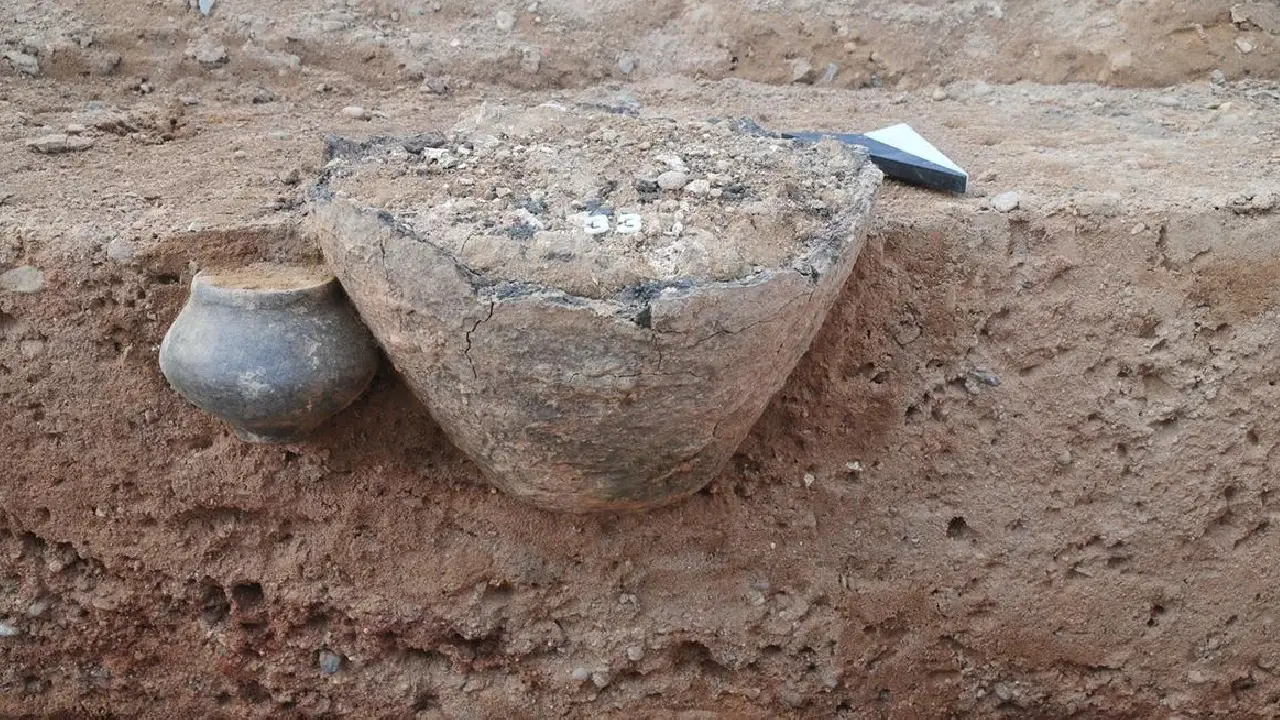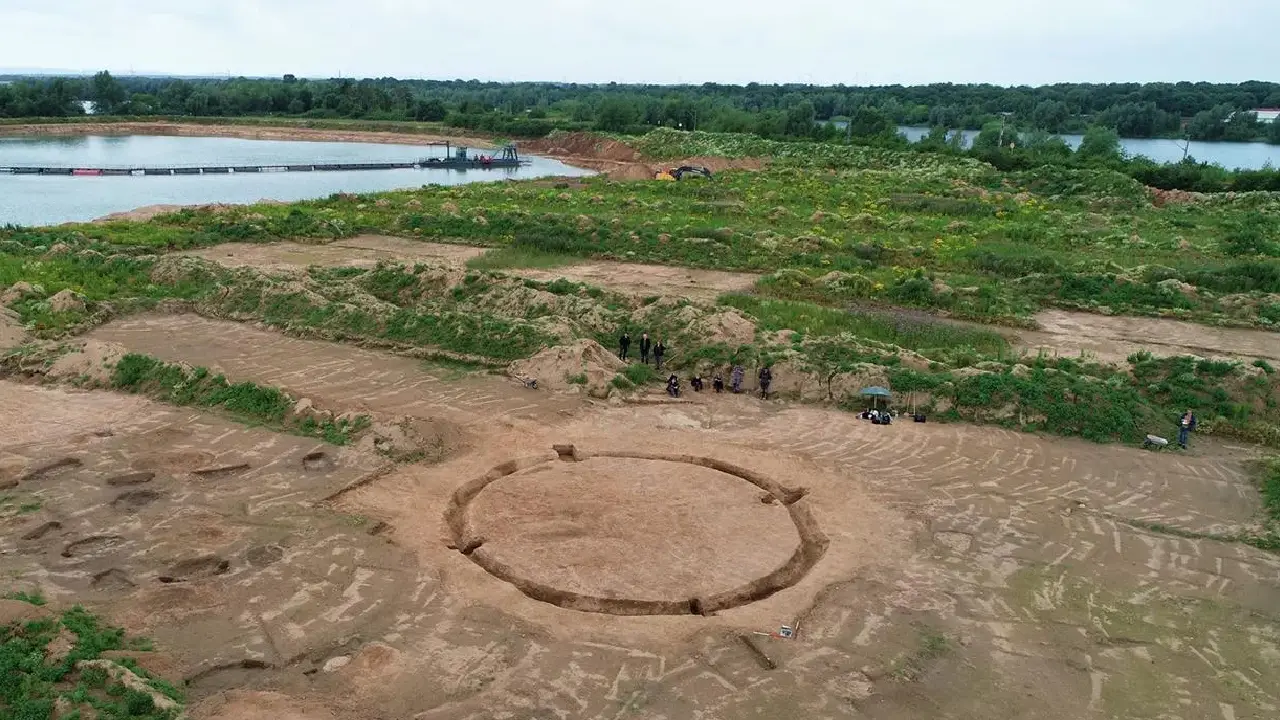Archaeologists in Germany have unearthed a significant Iron Age necropolis surrounding a Bronze Age burial mound in Petershagen-Windheim. This remarkable discovery was made during preparations for the expansion of the Wesling gravel works.
The Westphalia-Lippe Regional Association (LWL) Archaeology unit led the excavation. Aerial photographs revealed a distinct ring of vegetation, indicating the presence of a burial mound with a circular ditch. Upon initiating test excavations, archaeologists quickly uncovered a cremation burial, confirming their suspicions.

The Bronze Age burial mound, estimated to be over 2,700 years old, served as a prominent landmark for the Iron Age Nienburg group. The mound and its surrounding ditch remained visible in the landscape for centuries, guiding the placement of urns and cremation burials from the 7th to 5th centuries BCE and again in the 2nd to 1st centuries BCE.
The Iron Age cremation burials at the site exhibit a variety of forms. Some individuals were cremated on funeral pyres, and their remains were placed in urns for burial. Others were directly buried in the ground. Certain graves also contained small jars, likely holding offerings for the deceased to use in the afterlife, as well as other artifacts such as metal belt hooks.
To refine the dating of the graves, radiocarbon dating will be conducted on charcoal remains. While the preliminary dating based on urn shapes and ornamentation suggests a range between the 7th century BCE and the turn of the era, the actual period of use of the necropolis may be more precisely determined through scientific analysis.
This discovery adds to a growing body of evidence of extensive burial landscapes in the region. A similar site was recently excavated a few kilometers away during the expansion of the “Regioport” in Minden-Päpinghausen. These monumental burial sites offer valuable insights into the beliefs, practices, and social structures of the ancient populations who inhabited this area over 2,000 years ago.

Leave a Reply